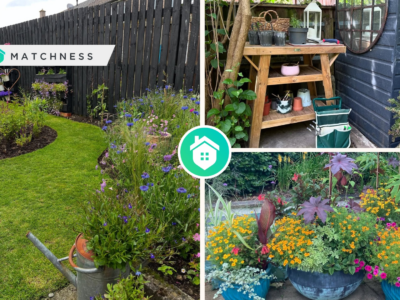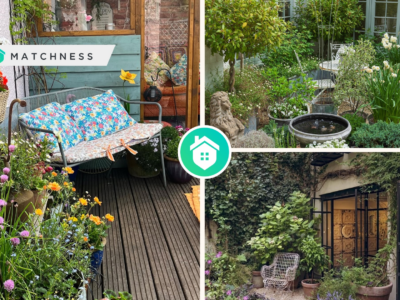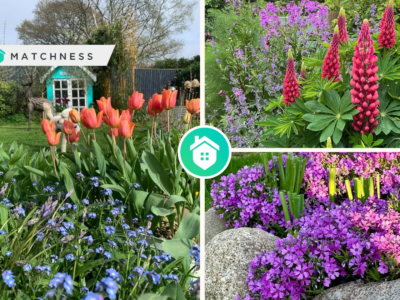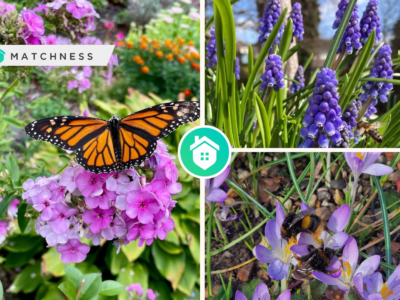After being cooped up all winter, spring is the perfect time to get out in the garden and start growing your food. However, getting your garden ready for spring planting requires a lot of work. Spring is the time to clean up winter debris, prune woody ornamentals, sow seeds, plant late-season bulbs, create containers, divide perennials, rejuvenate soil, and more. Getting these tasks done early will give you plenty of time to enjoy your garden throughout the season. That’s why it’s important to get organized with a spring gardening checklist. This will help you pace yourself as you tackle all the tasks required to create a pretty landscape for your home. If you’re looking for some tips on how to design landscape beds to perfection, be sure to check out this helpful article on Landscapes and More.
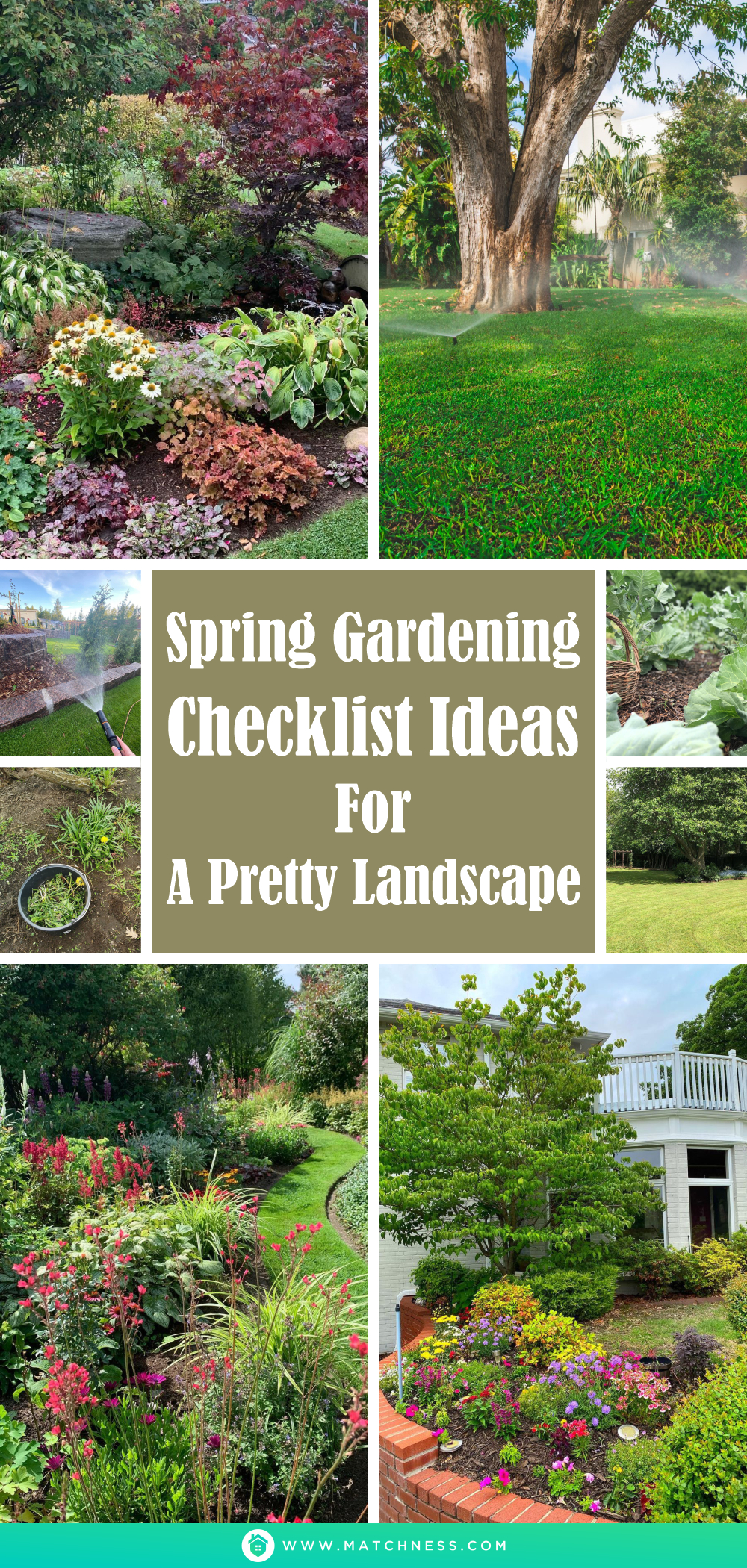
Planting
Once the snow melts and the sun is rising, it’s time to get busy planting your spring garden. While it may seem like a lot to do, gardening is one of the best ways to enjoy the warmer months after a long winter’s hibernation. To make your garden look its best, plan plants that are natural to your climate and soil. Also, consider how much sunlight and shade your yard receives throughout the year.
- Prepare the Soil. Whether you have a vegetable garden, flower bed or just a patch of dandelions, the soil is critical to growing a healthy plant. Besides providing sun, water and nutrients, it’s also home to a host of organisms, including earthworms, insects, and microorganisms that break down dead leaves and plant matter into readily available nutrients for your garden.

Healthy soil is ready to allow your plants to grow and develop perfectly. Manure with organic matter will enrich your garden soil. Organic materials that can be used are leaves, plant waste, garden detritus and straw. This is a solution and an important thing that you can pay attention to before planting spring plants this year. Prepare Garden Soil from @gardens_nursery
- Clean Up The Area. Spring is a good time to do the cleanup because the soil is moist and weeds are easier to control. Besides, a good clean up helps you get an idea of what areas need some extra care.
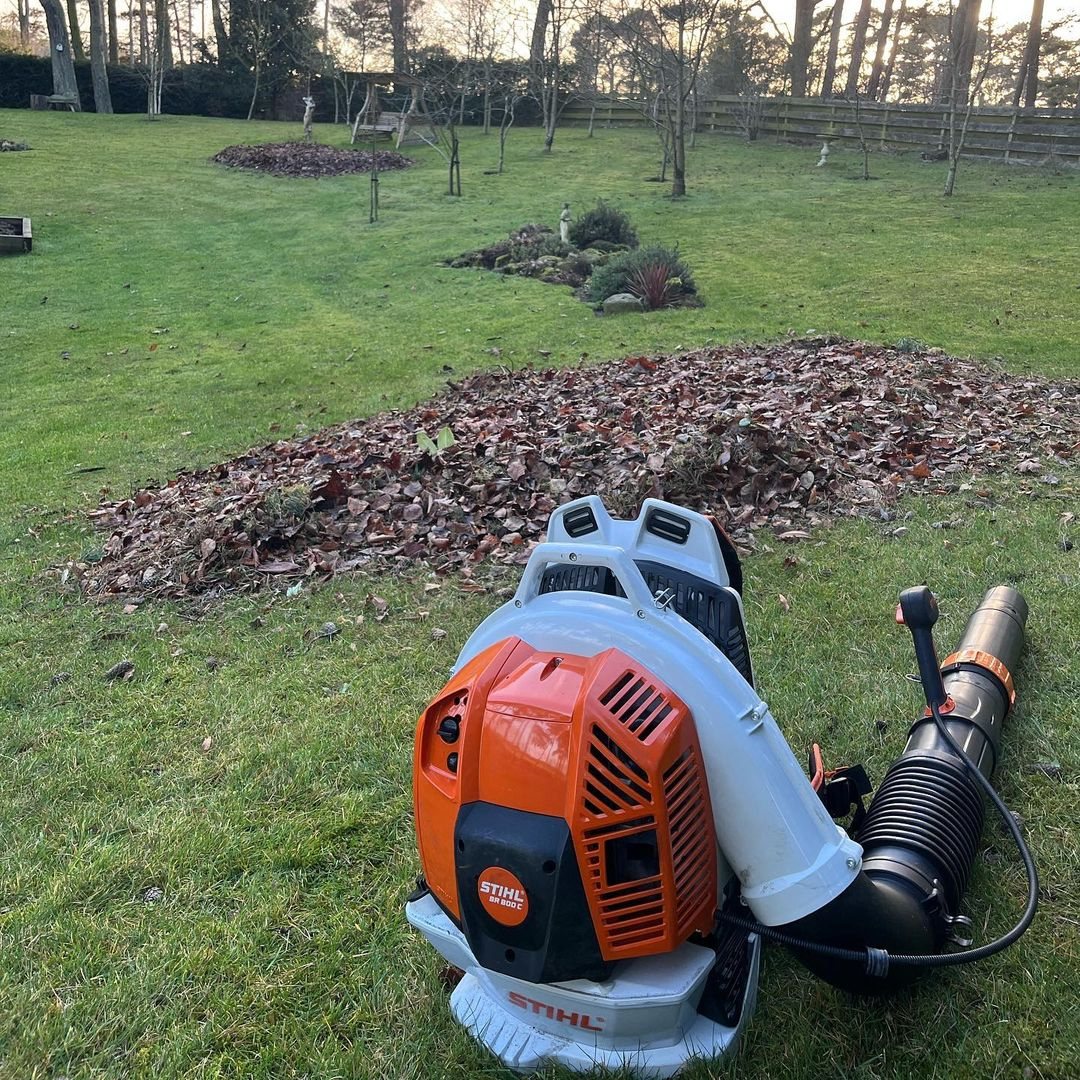
Clean debris from your garden decorations. To save energy, you can use a vacuum cleaner to thoroughly suck up debris, dry leaves and twigs. This machine can be removed when spring arrives. When your garden decor is cleaner then it is ready to use for a beautiful and relaxing outdoor sitting area. Vacuum Garden Manure from @jayrock_lawncare_gardening
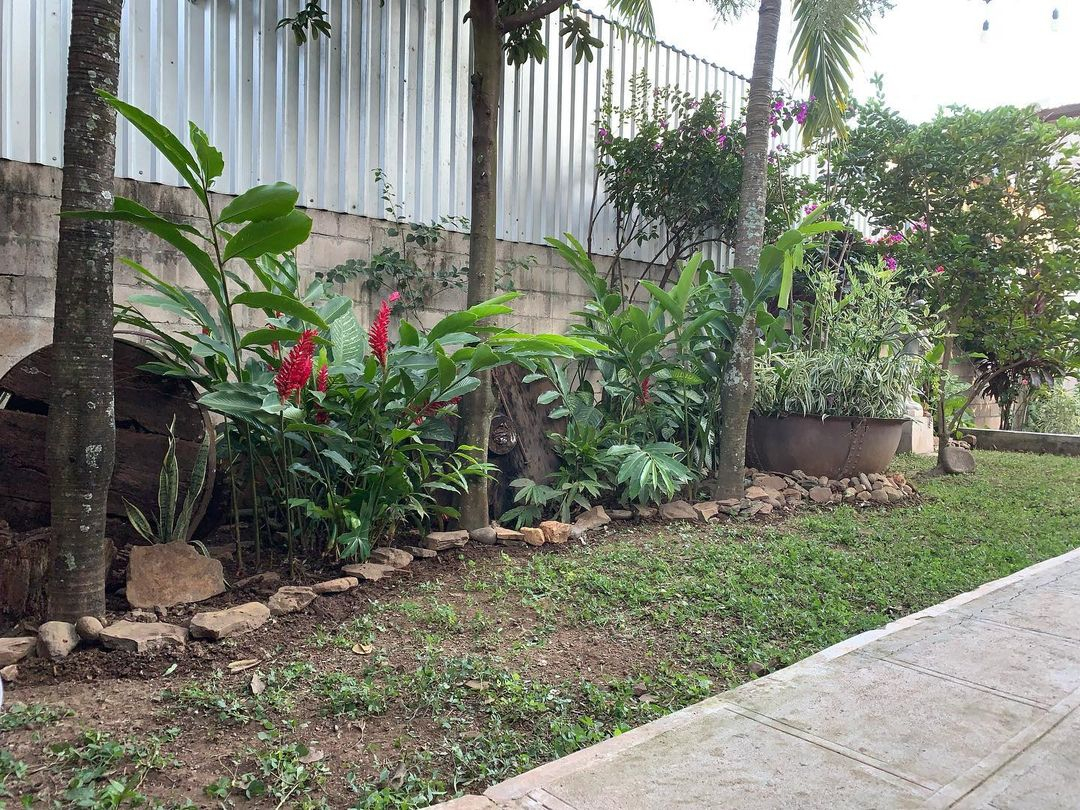
Prepare your landscaping garden decoration with a clean look. This is one way you can welcome spring this year. Perform routine maintenance and cleaning according to the schedule you have made. Replant some of your favorite greenery in spring with rich, organically fertilized soil. Clean Spring Garden from @cleangarden2022
- Add Fresh Mulch. Mulching keeps the soil moisture high and can help suppress weeds. It also protects sensitive plants from temperature extremes and helps reduce runoff.

To maximize the growth of vegetables in your garden area, only use fresh mulch planting ideas and can be obtained easily. This mulch is able to coat parts of the soil to make it more fertile when used. Try to use mulch sparingly to keep areas of your garden soil moist. Mulch Vegetable Grower from @appalachiaalaska
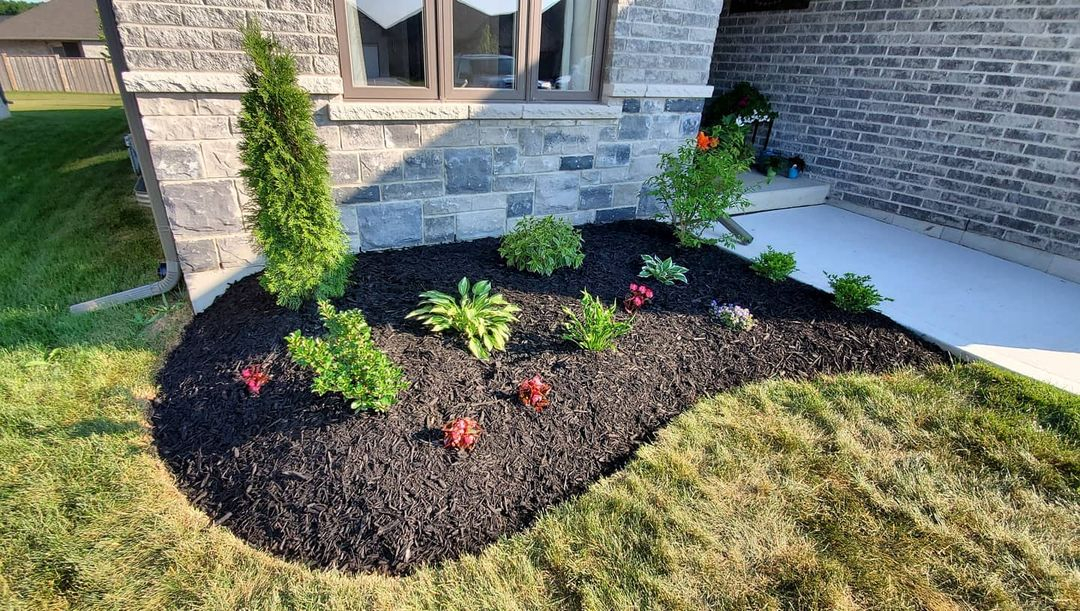
This garden bed decoration enhanced with mulch can be used to plant some of your most favorite types of greenery. Not only green plants, but you can also plant flowers. You can design a garden bed with a unique and curved shape, complement it with fresh grass to add color instantly and be more real. Mulch Garden Bed from @greenwood.landscaping
- Plant Your Perennials. Whether you’re looking for an evergreen ground cover, tall flowers that bloom all summer, or foliage that adds year-round interest, perennials have you covered. They come in a wide range of shapes, sizes, colors and textures.Perennials are great plants to plant in mass groupings. They add a splash of color and interest to the landscape in unexpected ways, and they are also incredibly low maintenance.
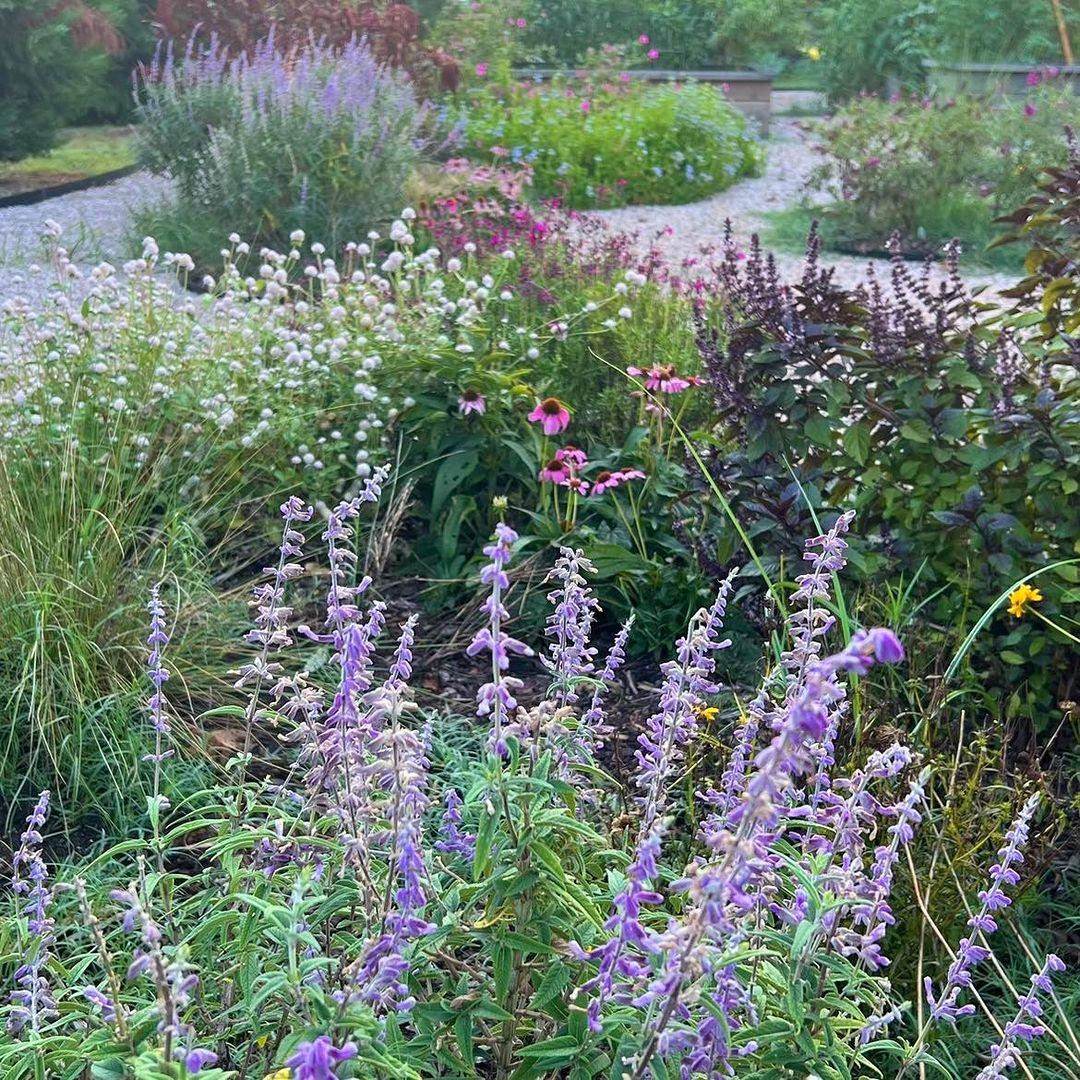
Perennials that bloom during spring this year are ready to add color to your landscaping garden decor. This plant readily takes up space and fills in gaps between blooming seasons, you can try growing it right now on your own. The blooms produced by these perennials come in a variety of different colors to make the garden more pleasant. Bold Color Perennials Decoration from @thedallasgardenschool
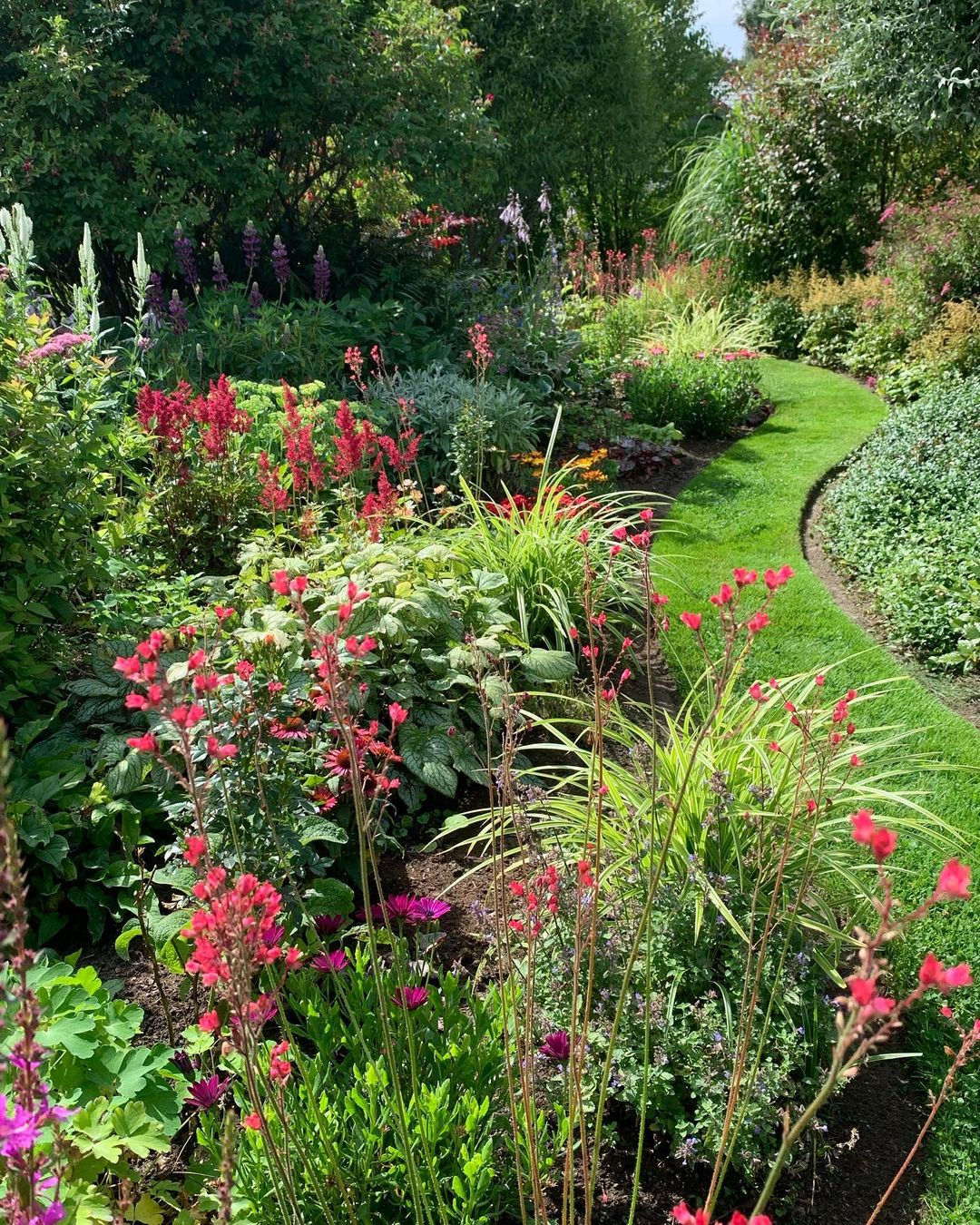
Perennials, which come in a variety of sizes, colors and different heights, make your garden decoration more diverse and unique. The slender stems of these perennials make it easy for you to trim them using pruning shears as needed. The expanse of green grass on the pathway adds color instantly, you can apply them simultaneously. Spring Perennials Ideas from @holhage
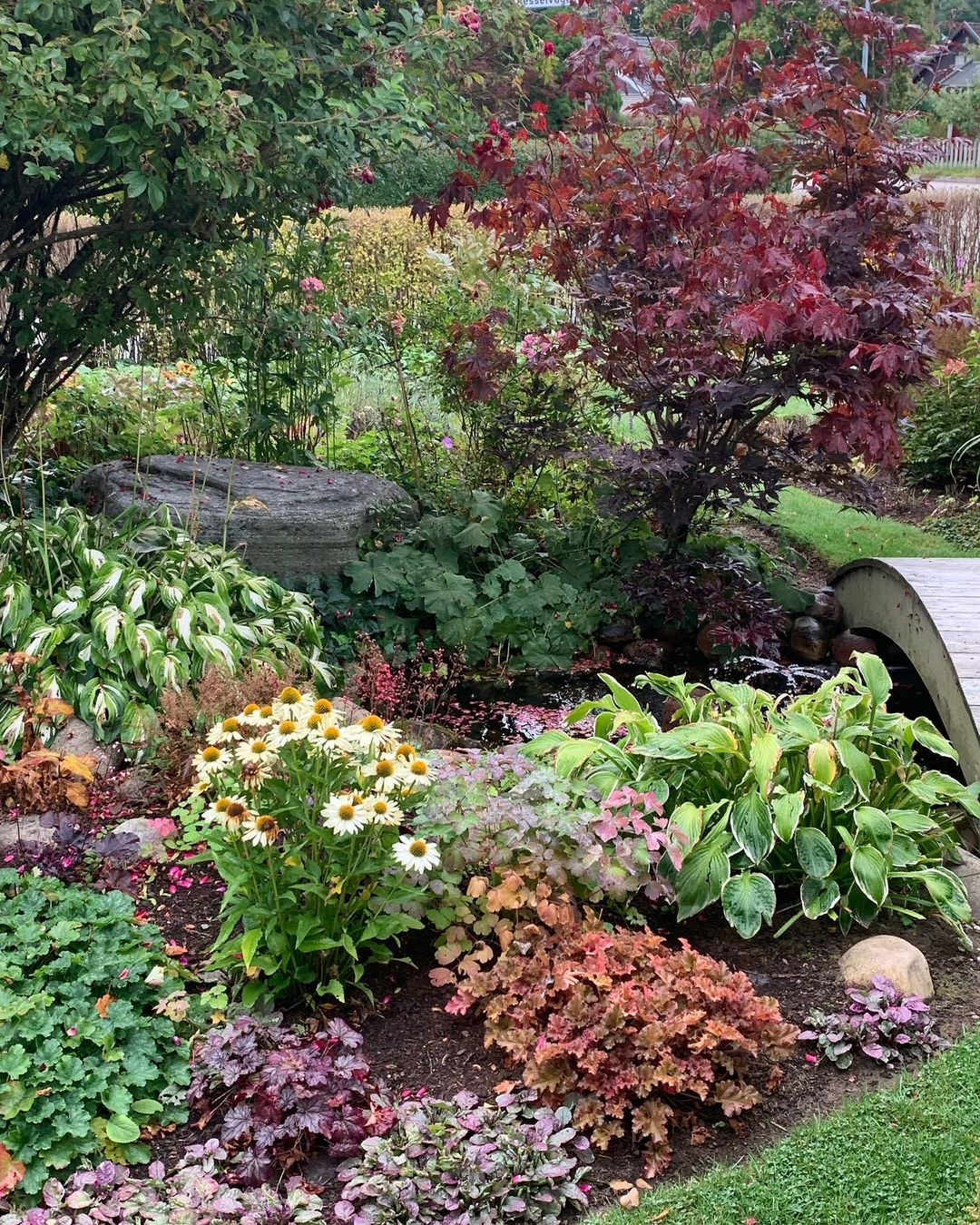
If you have empty land in the garden area, you can plant it with several types of perennials that come in a variety of different colors. When spring arrives, these perennials can bloom together so they can add a fragrant aroma which can be used as a relaxation area with beautiful outdoor views. These plants are low maintenance. Colorful and Blooming Perennials from @holhage
- Plant Your Trees and Shrubs. Planting trees and shrubs is an excellent way to add color to your landscape. They also give you more of a reason to spend time outside during the spring. When choosing trees and shrubs, consider their size, how they will look in your landscape, their water management needs, and their ability to thrive in your area
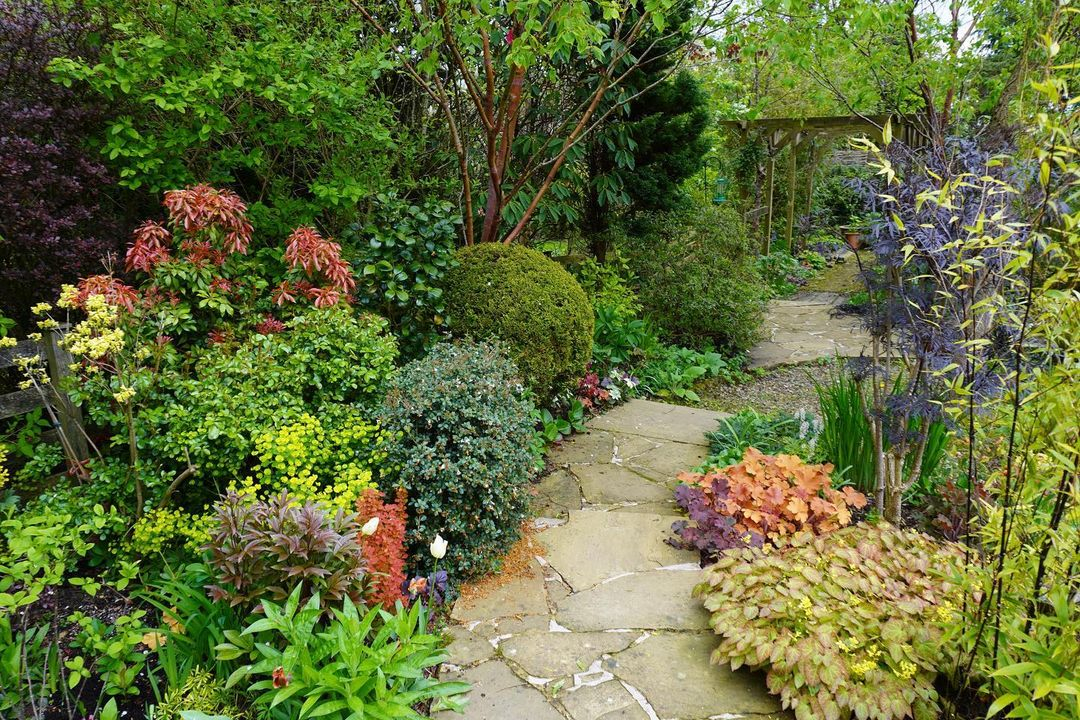
Shrubs that are used as garden border decorations make their appearance very elegant and ready to be used as the focal point of the room. The existence of these shrubs takes advantage of the empty land area and will grow with many and thick branches so that it can be used as additional shade when you are outside this room. Shrubs Garden Border Ideas from @carimorton
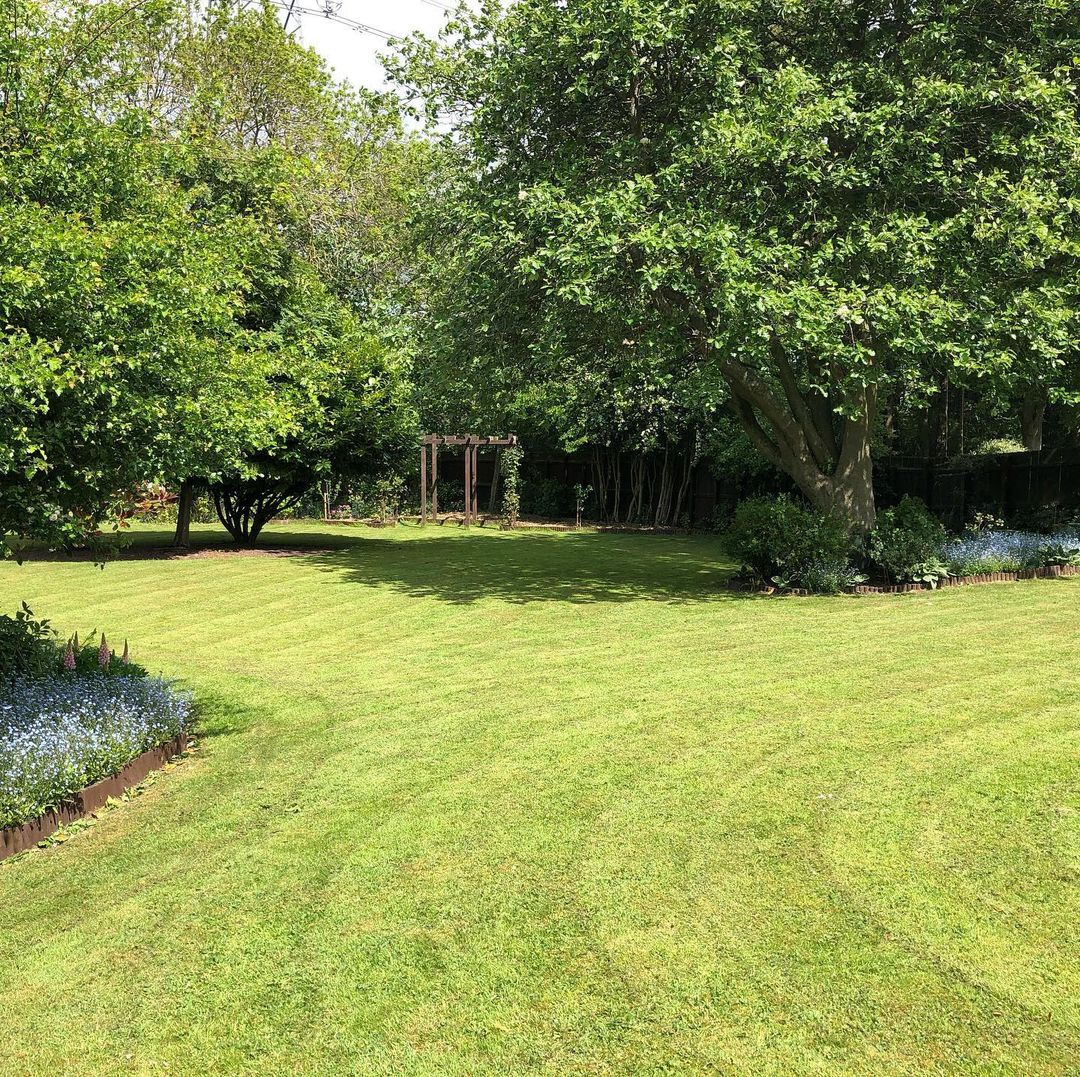
When you have a few trees in the garden area then relax quietly when spring arrives. Why ? Because it becomes a suitable season to enjoy the beautiful outdoor scenery. It’s not enough to stop here, the function of towering trees can also be used as instant shade for your outdoor, here you can enjoy the gentle breeze. Plant Some Trees from @morpethmick
Pruning
Pruning is one of the most important maintenance practices for a beautiful landscape. Remove dead branches and stems from shrubs, hedges, and leggy perennials, if needed. However, it can also be a daunting task for many homeowners. A well-pruned tree or shrub will make a dramatic impact on your property. It can provide shade and privacy, add to the curb appeal of your home, or even serve as a playground for kids.

Perennials growing wild in this backyard garden decor will make it look even more unattractive and messy. Therefore you can trim it using the plant scissors that you have with a hand-friendly handle so it doesn’t make your wrists easily ache and sore when you use them. Perennials come in a variety of different types and you can distinguish them from other types of plants so you don’t cut them wrong. Prune Perennials Plant from @miguelreciogonzalez
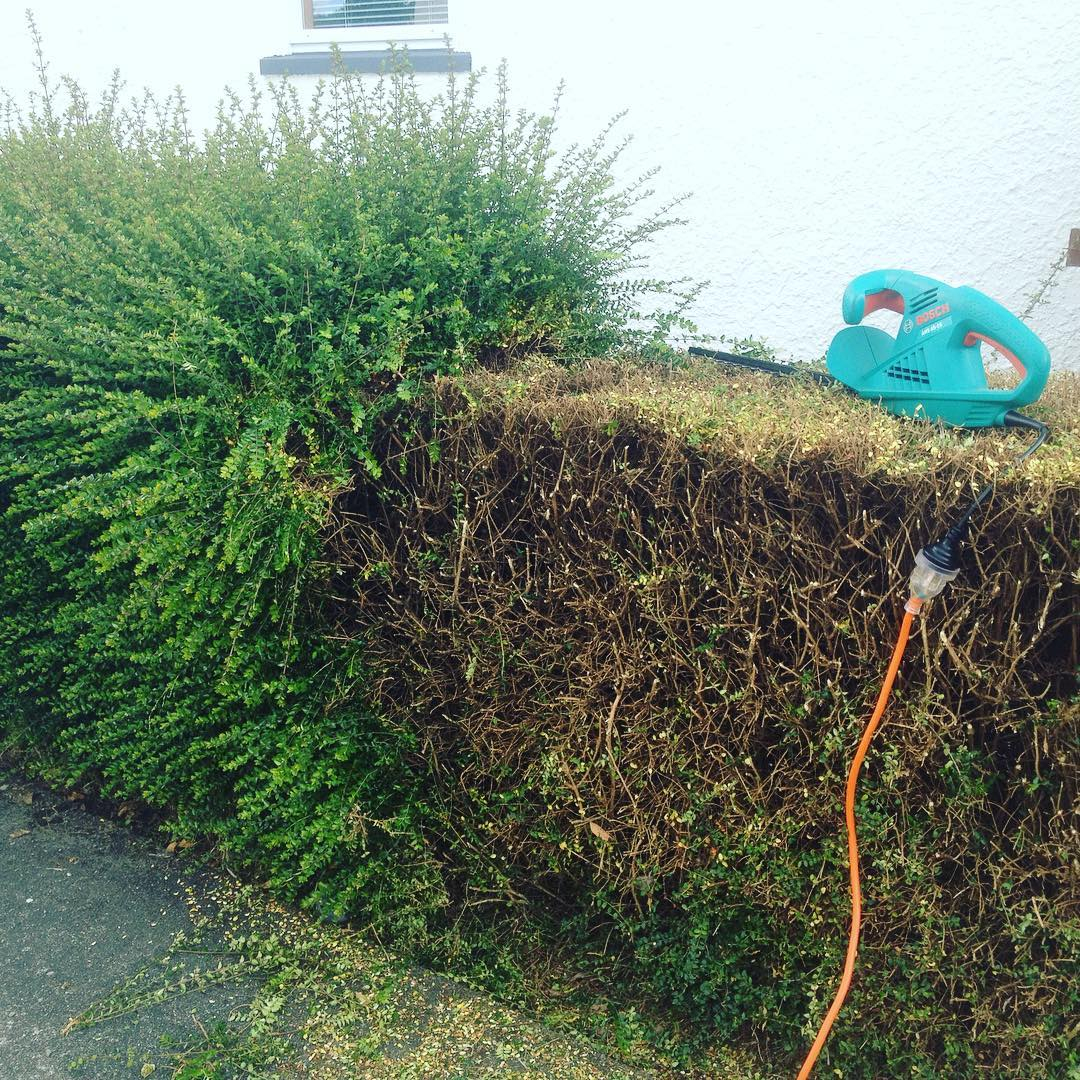
To help display a neater spring garden decor, you can prune any parts of the hedges that have developed or are growing messy. Electric hedge shears will lighten your work in the garden area when spring arrives. After trimming, you can sweep under the hedges and remove plant debris for a cleaner, more polished look. Prune Hedges Ideas from @di.athlete
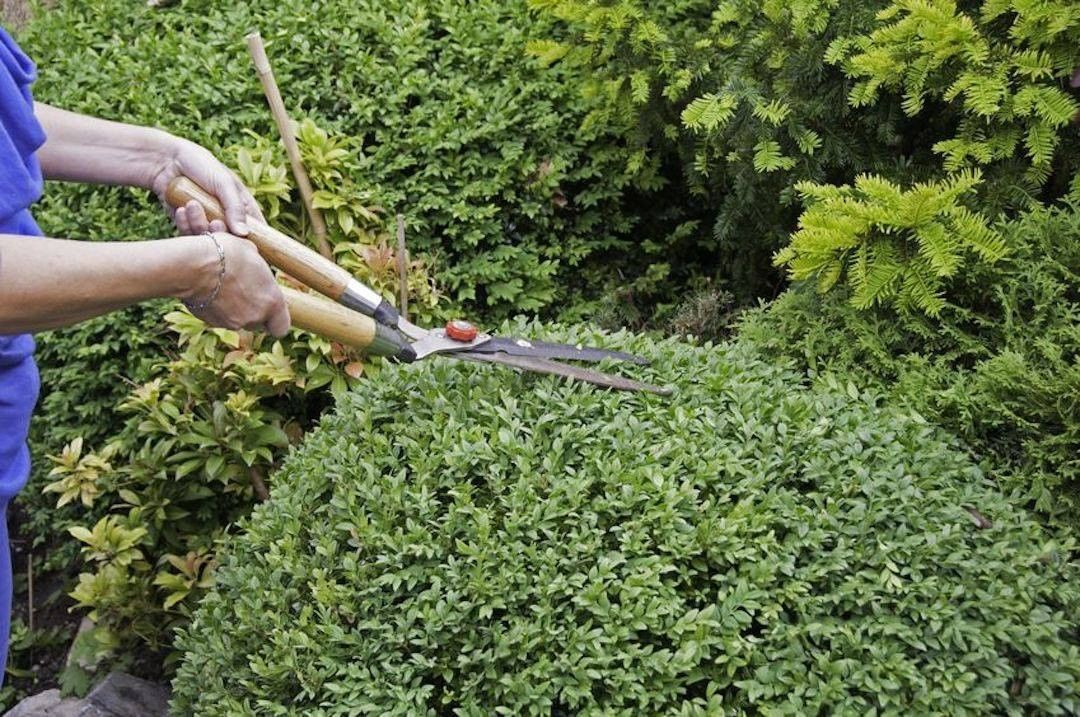
Shurbs are one of the garden plants that you need to pay attention to to welcome spring this year. These plants usually grow with a period of time that is fast enough so you can routinely do pruning, at least once or twice a month. use a pruning tool that has a fairly sharp copper blade. You can design the shrub according to the shape you want. Clean Surface Shrubs from @seasol_international

Do you have dry trees in the garden area? If you have it, you can trim the branches of the tree using a chainsaw, making it easier for your garden work to welcome spring this year with joy. This pruning is done so that the tree can blossom again with fresher and newer leaves and twigs so that it can be used as outdoor shade. Prune Dry Twigs from @apzeldinu
Fertilizing
When you fertilize your lawn and garden, make sure you use the right kind of product at the right time. Too much fertilizer will harm the plant and may contaminate groundwater. Choosing the correct fertilizer is important because nutrient needs vary by plant, soil type and weather conditions. Look for a formula that has the three essential nutrients: nitrogen (N), phosphorus (P), and potassium (K) – the N-P-K ratio will be listed on the fertilizer label.
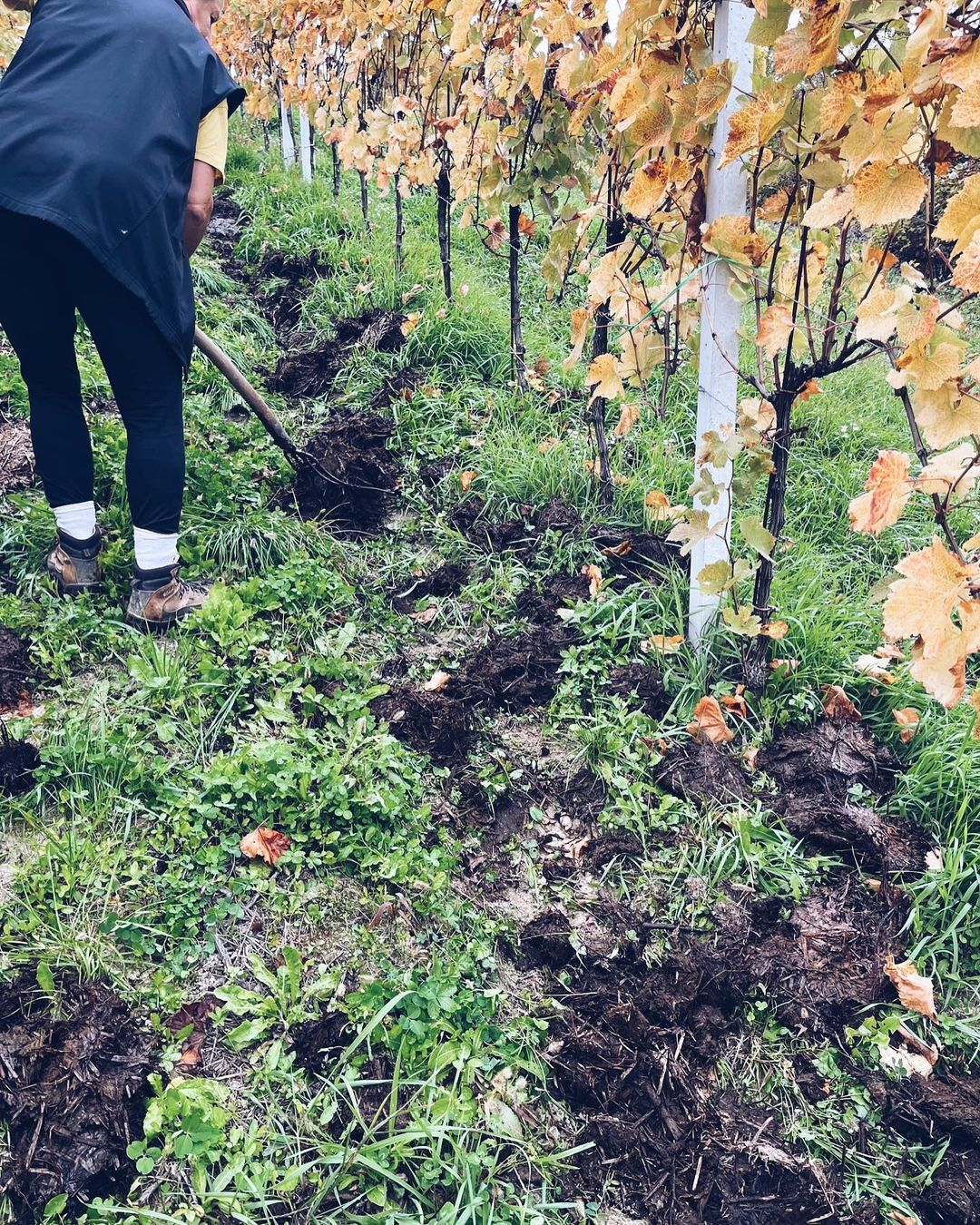
Before planting in the garden soil, you can sprinkle organic fertilizer so that the plants can thrive. Organic fertilizers can be produced by themselves from the remaining straw or animal manure by means of fermentation. One of the superior advantages of using organic fertilizers is that they do not pollute your garden soil area and are certainly more environmentally friendly. Organic Fertilizer from @korakwinery
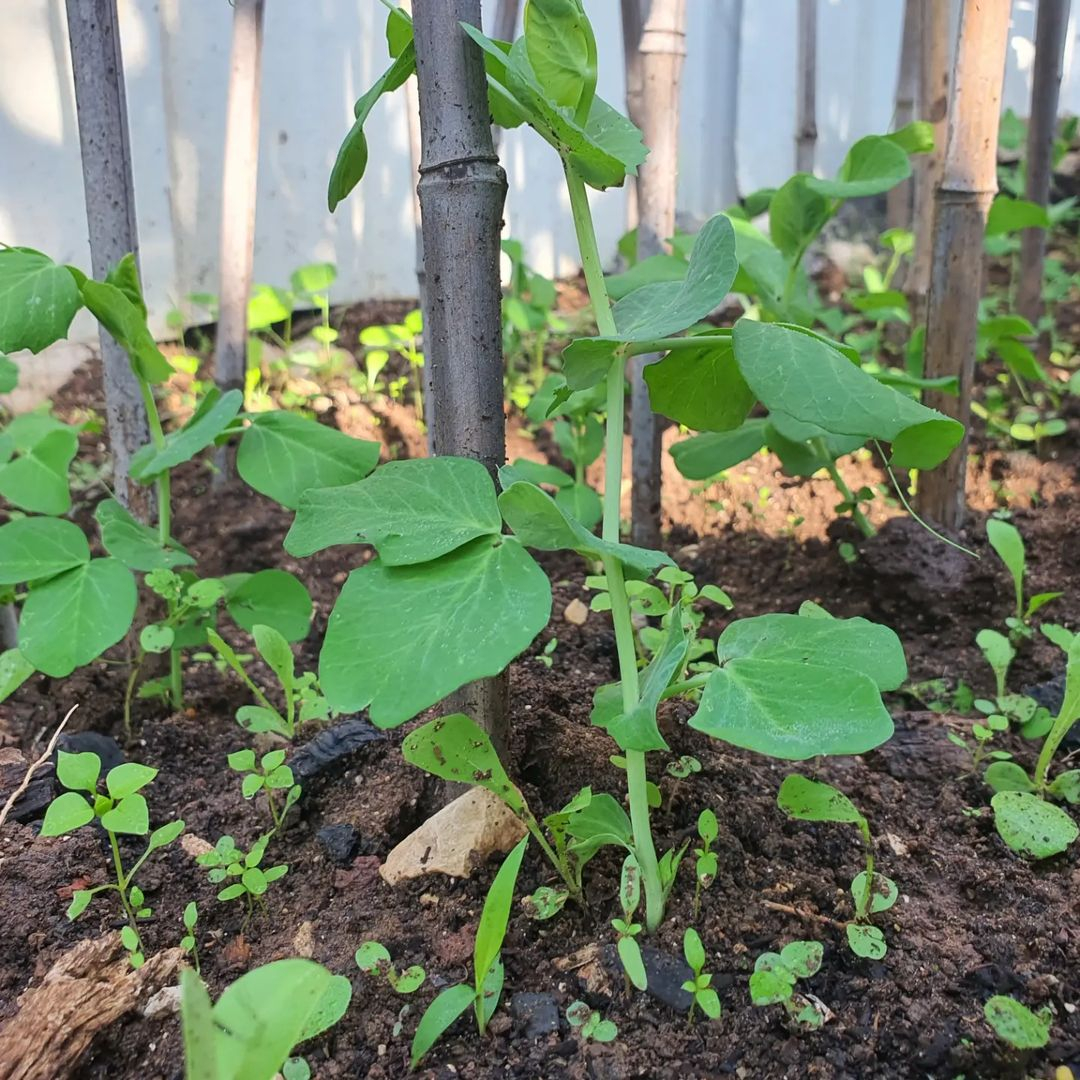
What are the benefits of fertilizer for this part of your garden soil? One of the benefits that can be obtained is being able to make your grow up plants grow more fertile and maximally. Here you can plant vegetables or fruits according to the seeds or seeds that you already have. Use just enough fertilizer to keep the soil moist as well so it doesn’t damage it. Grow Up Fertilizer Plants from @garden_gardening_
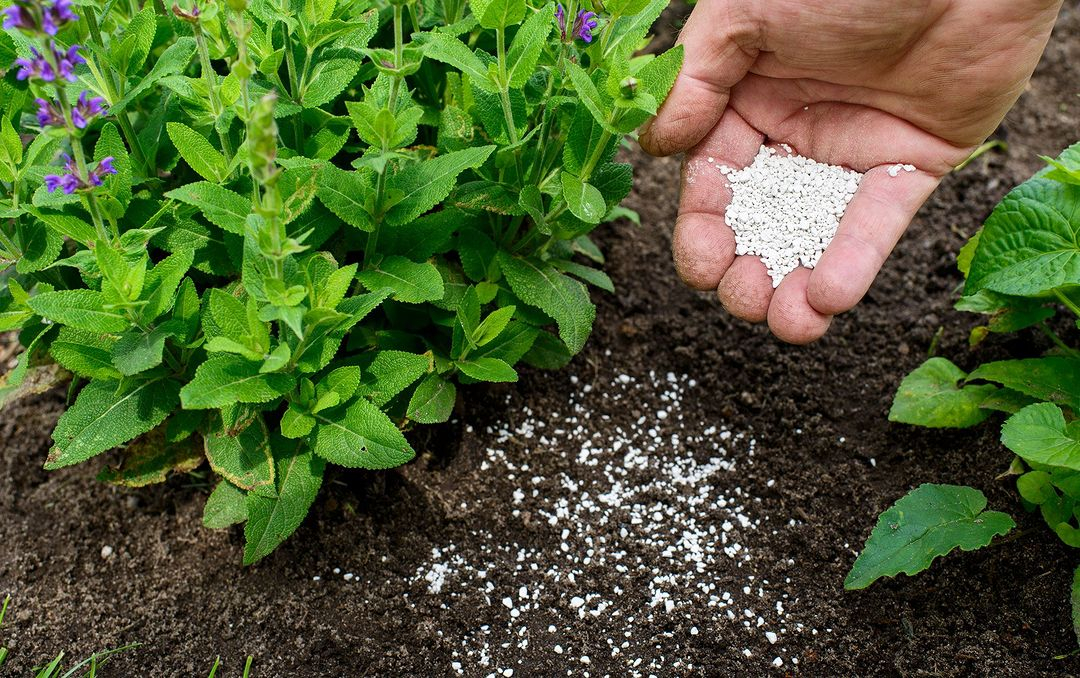
Adjust the use of fertilizers to the fertility requirements of the soil in your garden area. Fertilize the soil part with a predetermined schedule so it’s not too often or not too slow either. Scheduling this fertilization can be done according to the free time you have each week. Fertilizing Routine Garden from @theplantfactory_kroonstad
Weeding
Weeding is one of the most important spring gardening tasks, so start early. Remove weeds before they have a chance to get established and grow big enough to take over your garden. After weeding, mulch beds that don’t contain perennials to help prevent new weeds from sprouting in the coming season and give your soil some much-needed oxygen. Use a mulch that contains organic materials like compost or peat.
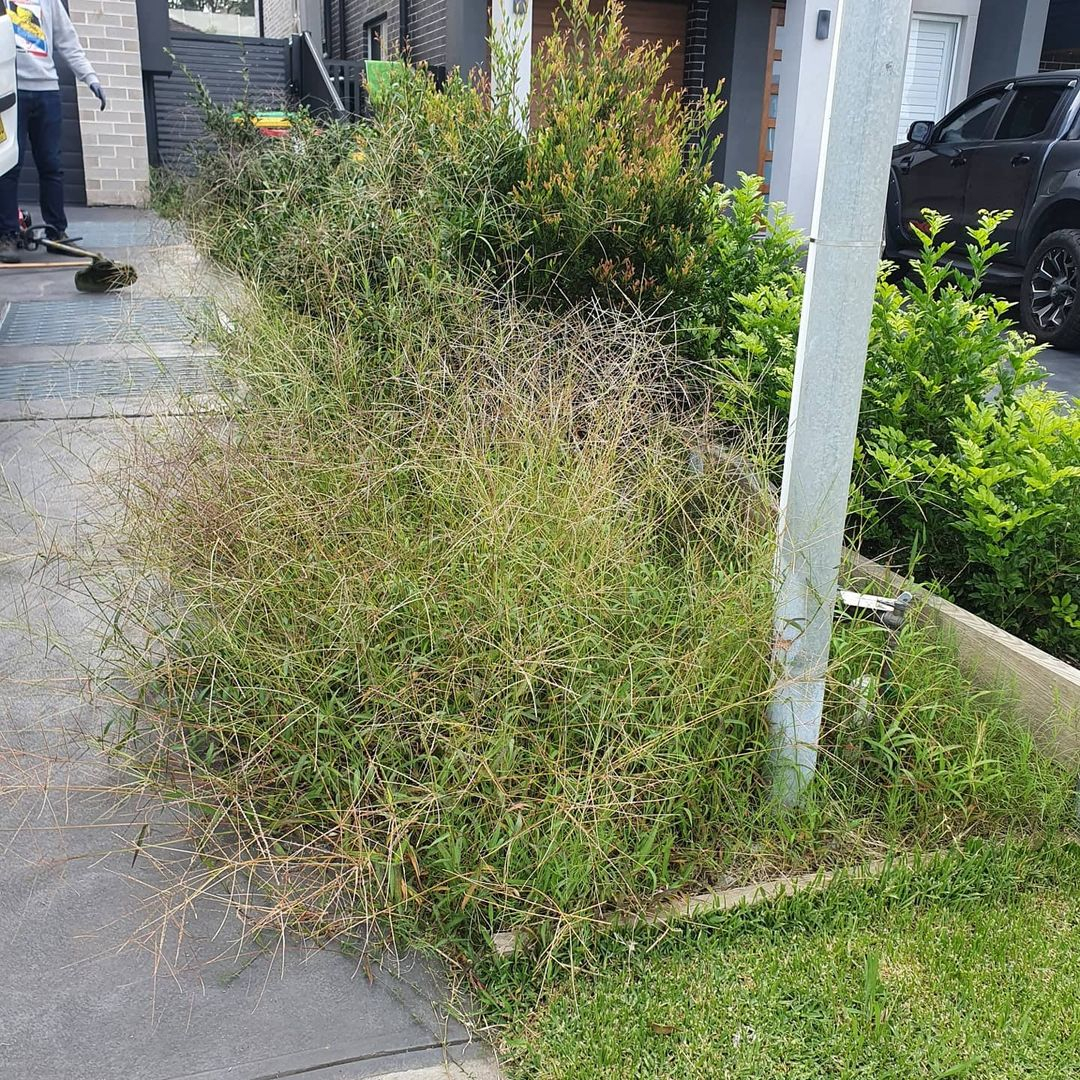
Look at the weeds growing rampant in your garden area, isn’t it very disturbing to the eye? Yes, you can clean it or remove it so that the plants around it can grow and develop more optimally. If you don’t have time to spare, you can spray weed killer so it will dry by itself when exposed to the reflection of the hot sun. Before Pruning Weeds from @indra.gardeningsydney
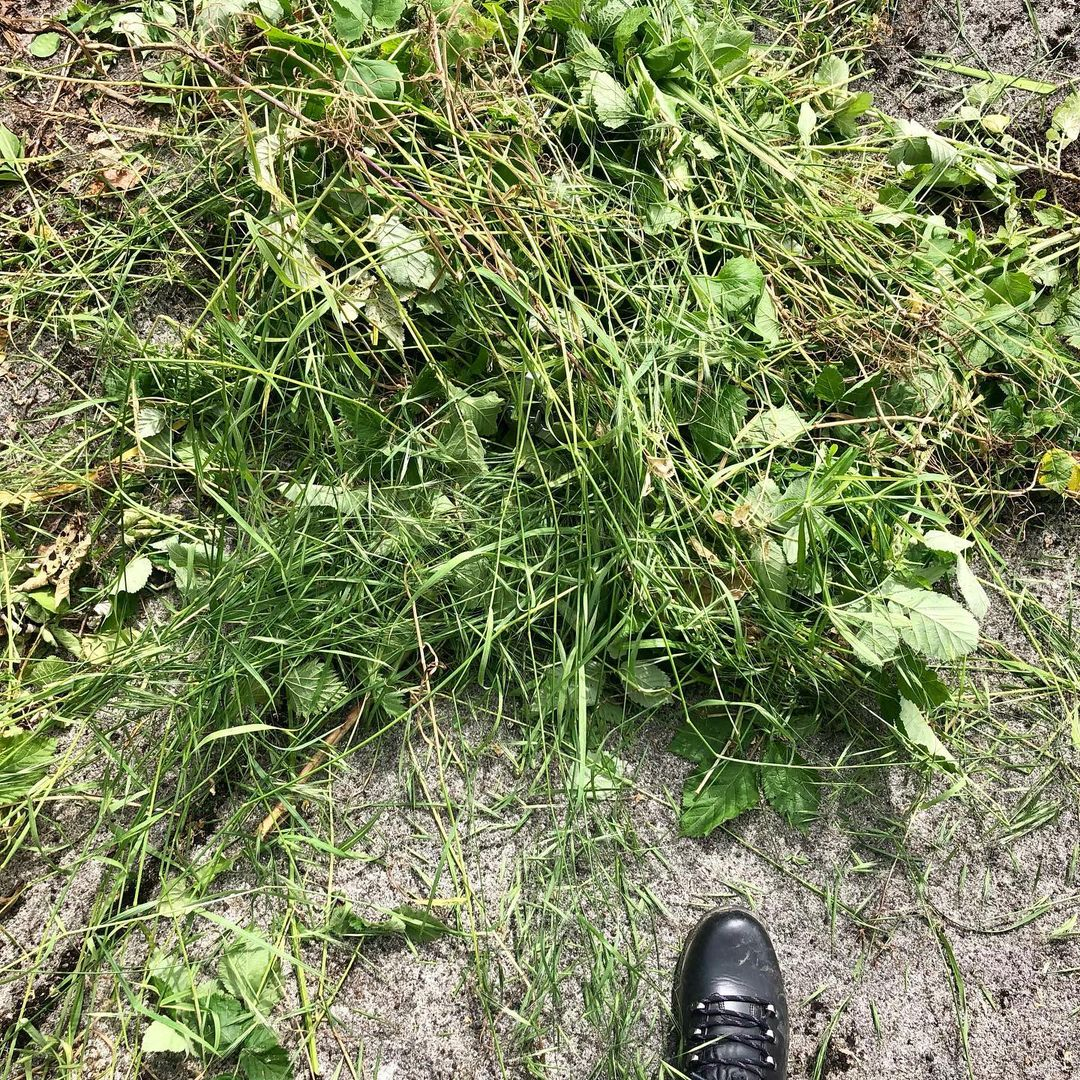
You can pull out the weeds in your landscaping garden area in order to maximize the plants you plant to develop better and optimally. You can do the removal of weeds yourself to save more on the budget, before covering your palms with gloves to avoid scratching and causing bleeding or soreness. Remove Weeds from @yarrowlaneherbs
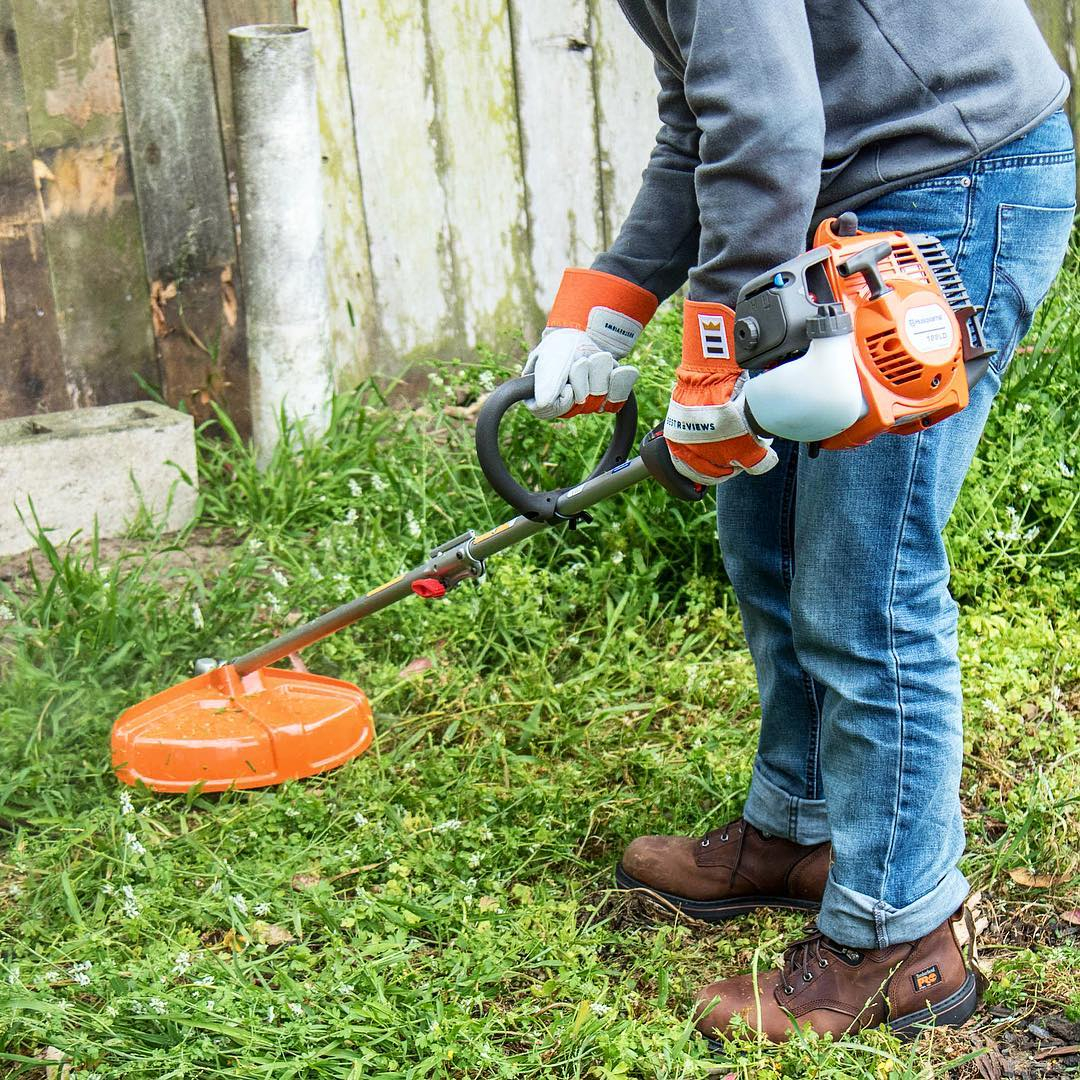
Do you have a weed remover or cutter? Yes you can take it out of the shed to clean the spring garden landscaping decorations. This tool makes your work easier and of course more effective and efficient. This tool does not use a cable so it can be used in any area as needed, charge it again and connect it to the socket when it is not working optimally. Use a Weed Trimmer from @bestreviews
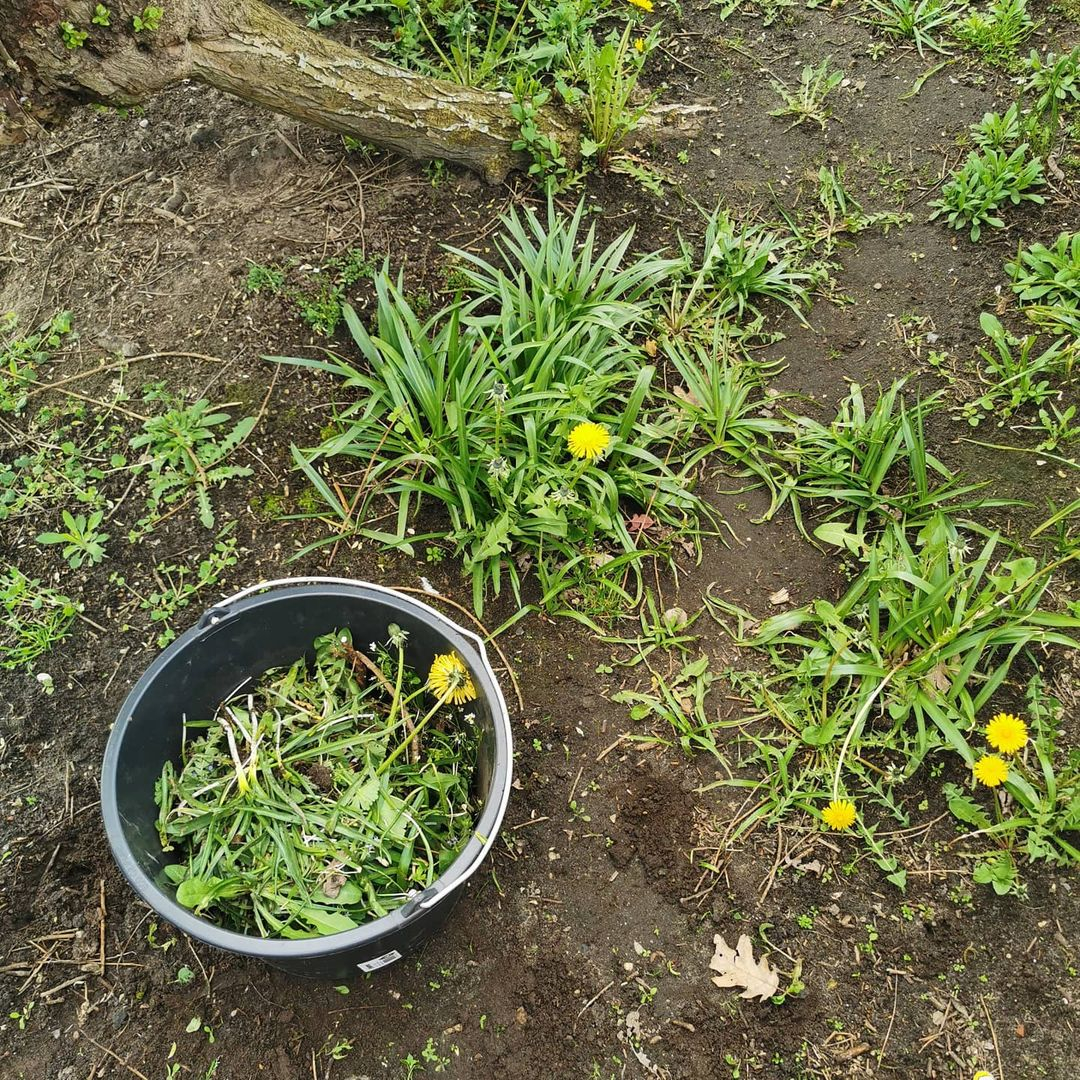
Unplug and remove weeds from your landscaping garden area, because these plants will interfere with the growth of other plants and are very detrimental. You can remove it by hand and collect it in a container that is equipped with a handle to make it easier for you to throw it in the trash. Usually these weeds are easier to remove from the ground. Remove Weeds and Discard from @enequisthessner
Watering
We all know that water is an essential ingredient for a healthy, beautiful garden. But knowing when to water and how much can be tricky. Watering too frequently can cause shallow root growth, which leads to a greater chance of fungal growth. It can also cause plants to wilt. To check soil moisture, feel it with your fingers. If the soil sticks together easily in your palm, it’s probably moist enough to go without a watering. If the soil feels dry a few inches down, it’s time to water. But wait a day before you do.
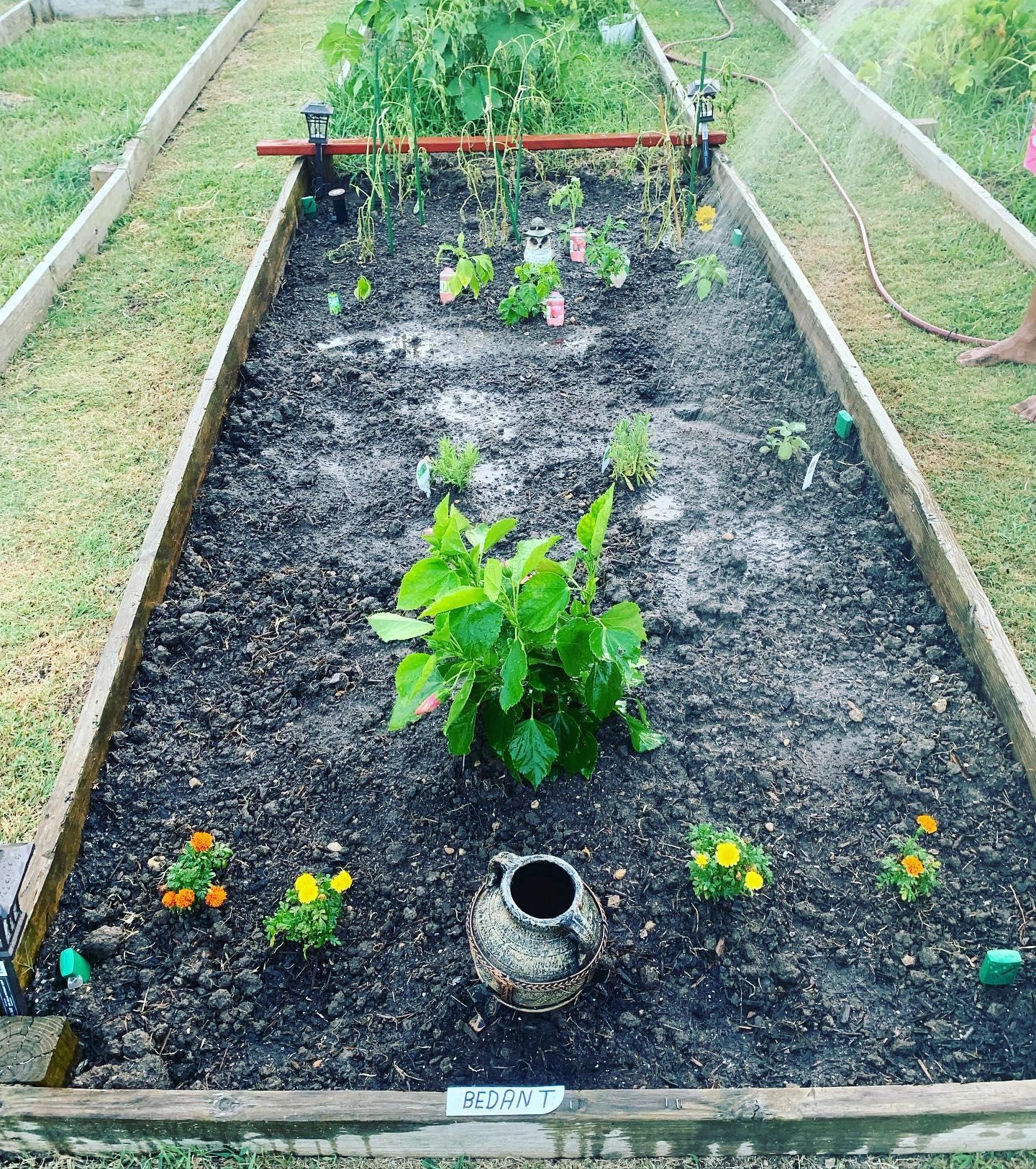
Spray water on areas of garden land planted with various types of plants to help their development naturally and significantly. Also arrange watering at a scheduled time so that your soil is not too moist and causes plants to rot easily. Use a water hose to make watering your plants easier. Water Plants According to Soil Moisture from @bednt
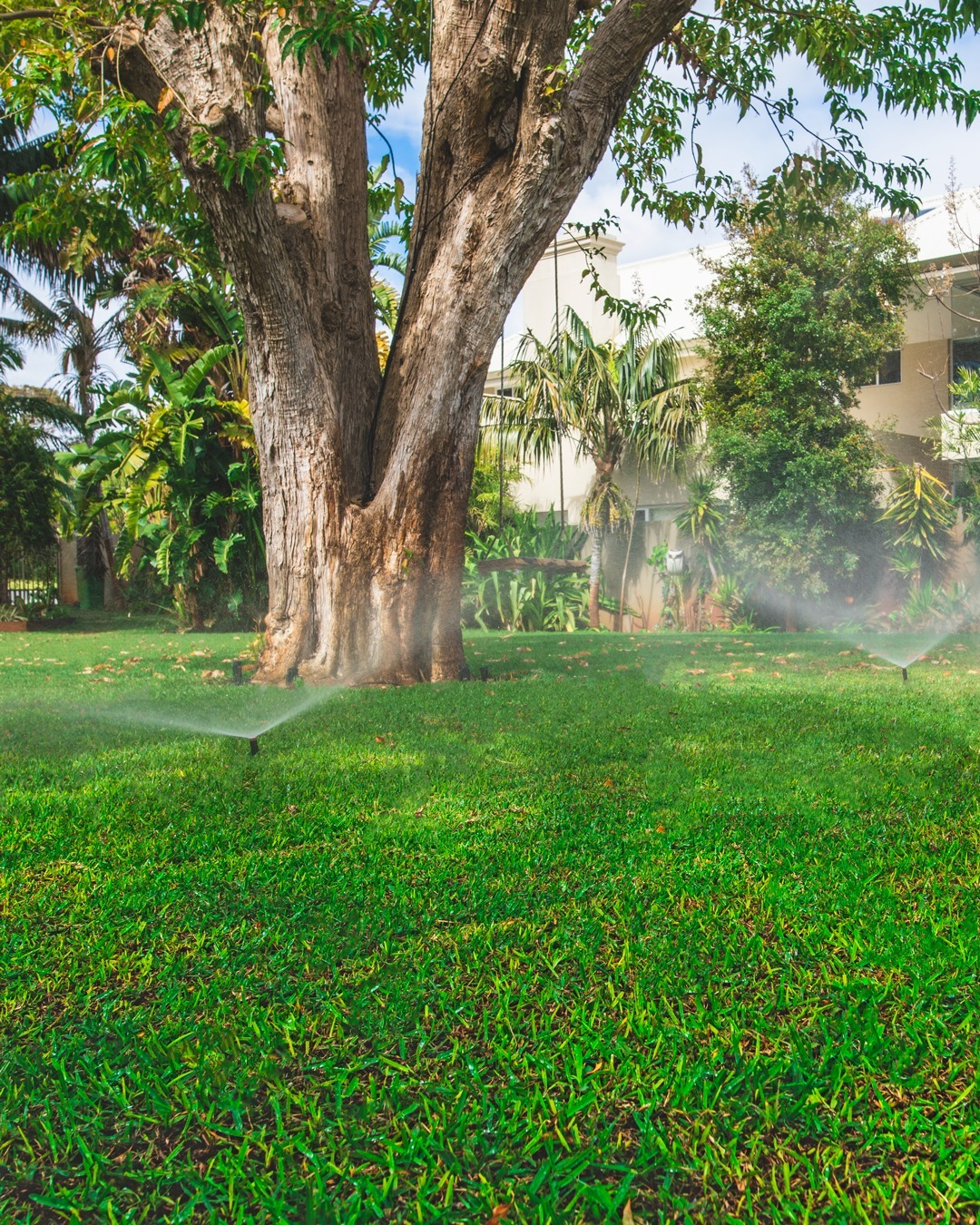
To fertilize your grass in the landscaping garden area, you can use more than one sprinkler nozzle. You can have more than one watering garden or it can be adjusted to the extent of the grass. This watering garden will spray water further so that it can be perfectly evenly distributed and this garden area remains fertile throughout the year. Sprinkler Nozzles Garden from @holmangarden
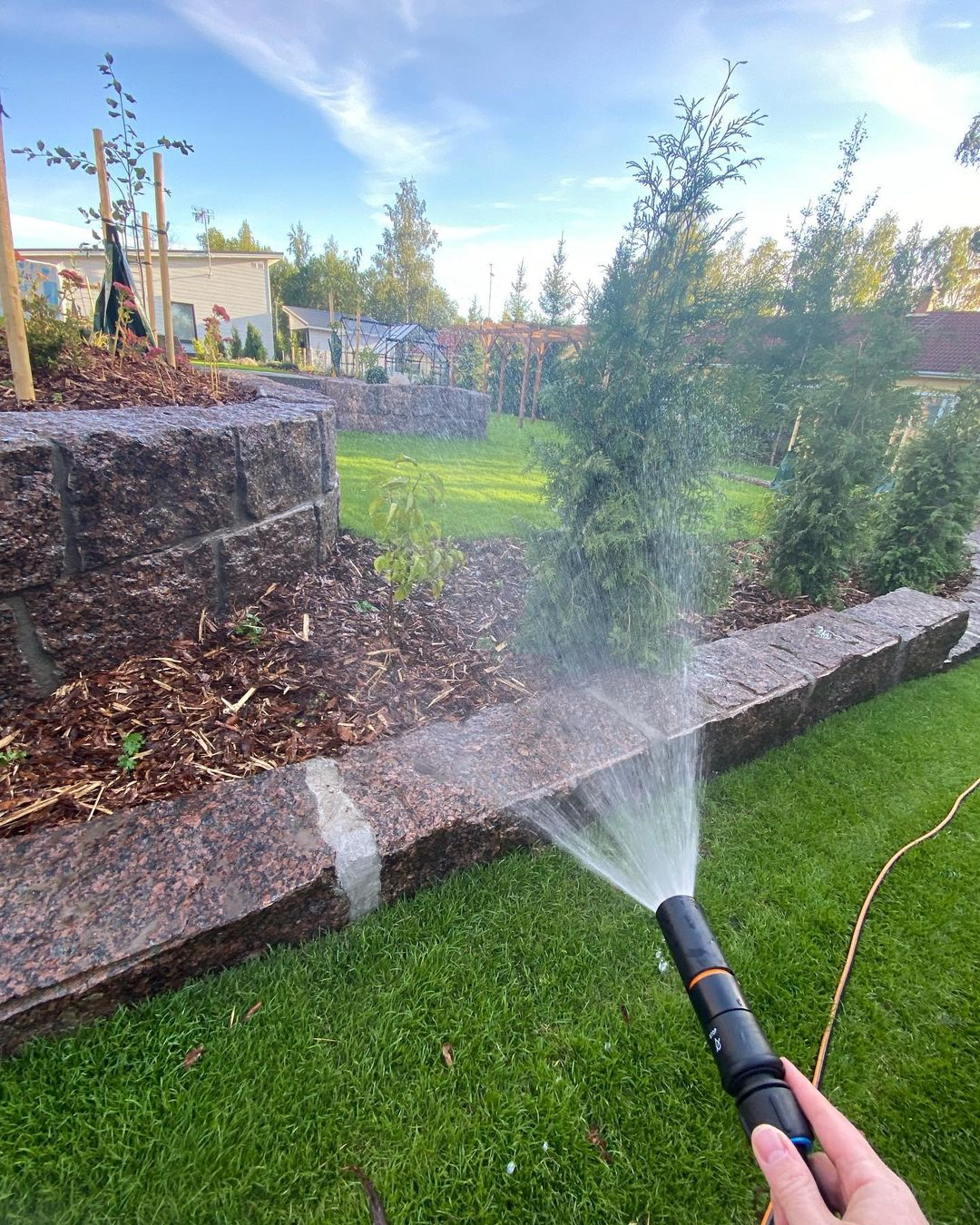
To maintain and make your plants grow well and optimally, you can do regular watering every morning or evening using a power wash that is stored in the garden shed. When spring arrives, it’s time to take out all your garden tool needs for maintenance or planting. Adjust the nozzle according to the watering needs of the plants in this area of the garden. Use Power Wash from @villamiekka





